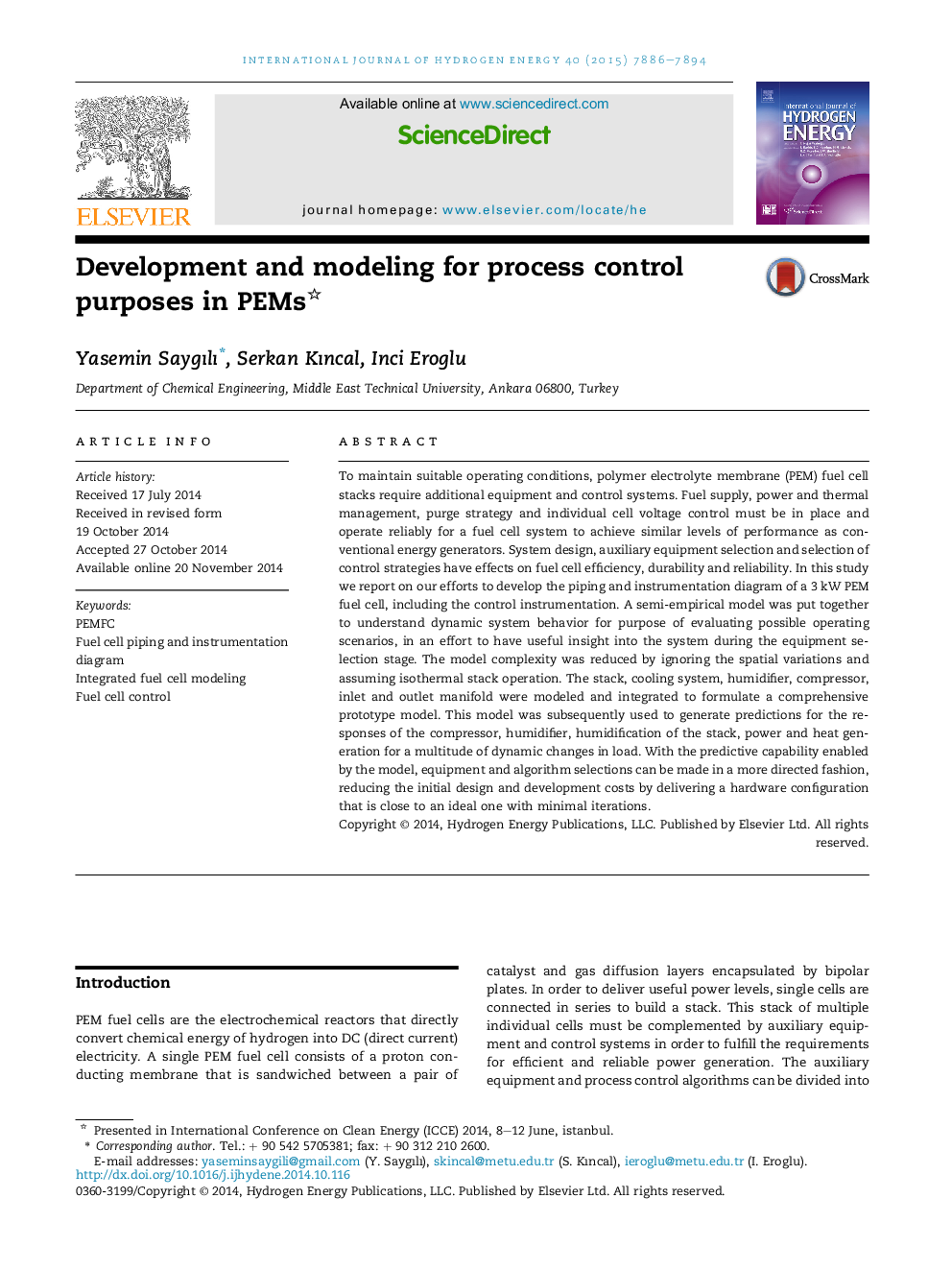| کد مقاله | کد نشریه | سال انتشار | مقاله انگلیسی | نسخه تمام متن |
|---|---|---|---|---|
| 1279764 | 1497449 | 2015 | 9 صفحه PDF | دانلود رایگان |

• P&ID of a 3 kW PEM fuel cell was developed and enhanced with the control strategy.
• Stack and the auxiliary equipment models were integrated for the prototype model.
• Cooling system, humidifier, compressor, inlet and outlet manifold are developed.
• Several responses of the system obtained for a multiple step changes in load.
• Higher heat and mass transfer area for the humidifier gives better results.
To maintain suitable operating conditions, polymer electrolyte membrane (PEM) fuel cell stacks require additional equipment and control systems. Fuel supply, power and thermal management, purge strategy and individual cell voltage control must be in place and operate reliably for a fuel cell system to achieve similar levels of performance as conventional energy generators. System design, auxiliary equipment selection and selection of control strategies have effects on fuel cell efficiency, durability and reliability. In this study we report on our efforts to develop the piping and instrumentation diagram of a 3 kW PEM fuel cell, including the control instrumentation. A semi-empirical model was put together to understand dynamic system behavior for purpose of evaluating possible operating scenarios, in an effort to have useful insight into the system during the equipment selection stage. The model complexity was reduced by ignoring the spatial variations and assuming isothermal stack operation. The stack, cooling system, humidifier, compressor, inlet and outlet manifold were modeled and integrated to formulate a comprehensive prototype model. This model was subsequently used to generate predictions for the responses of the compressor, humidifier, humidification of the stack, power and heat generation for a multitude of dynamic changes in load. With the predictive capability enabled by the model, equipment and algorithm selections can be made in a more directed fashion, reducing the initial design and development costs by delivering a hardware configuration that is close to an ideal one with minimal iterations.
Journal: International Journal of Hydrogen Energy - Volume 40, Issue 24, 29 June 2015, Pages 7886–7894